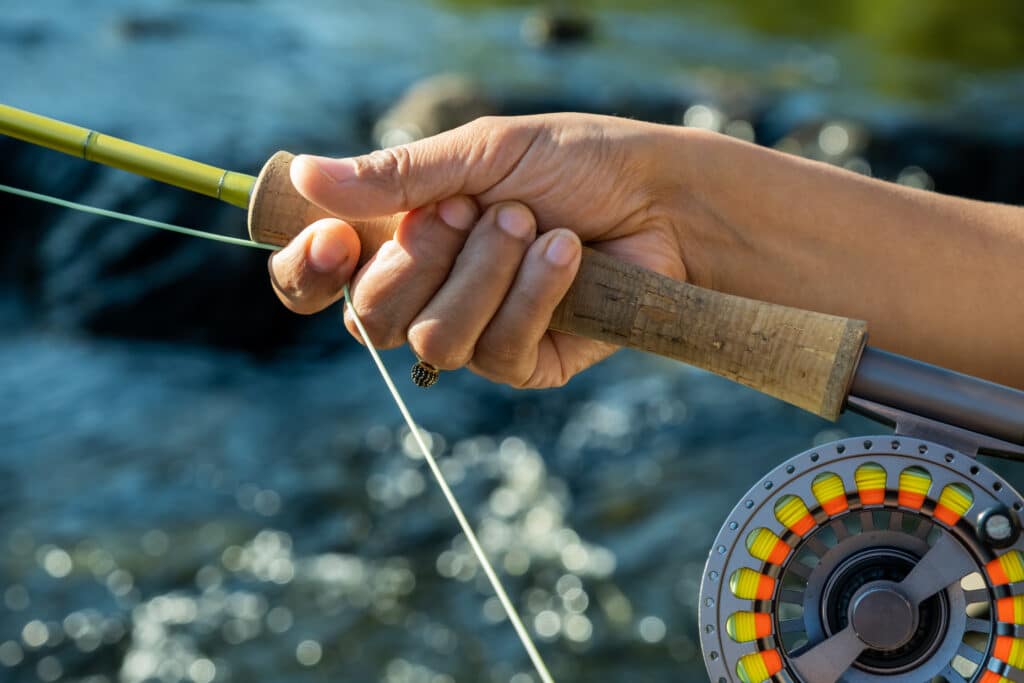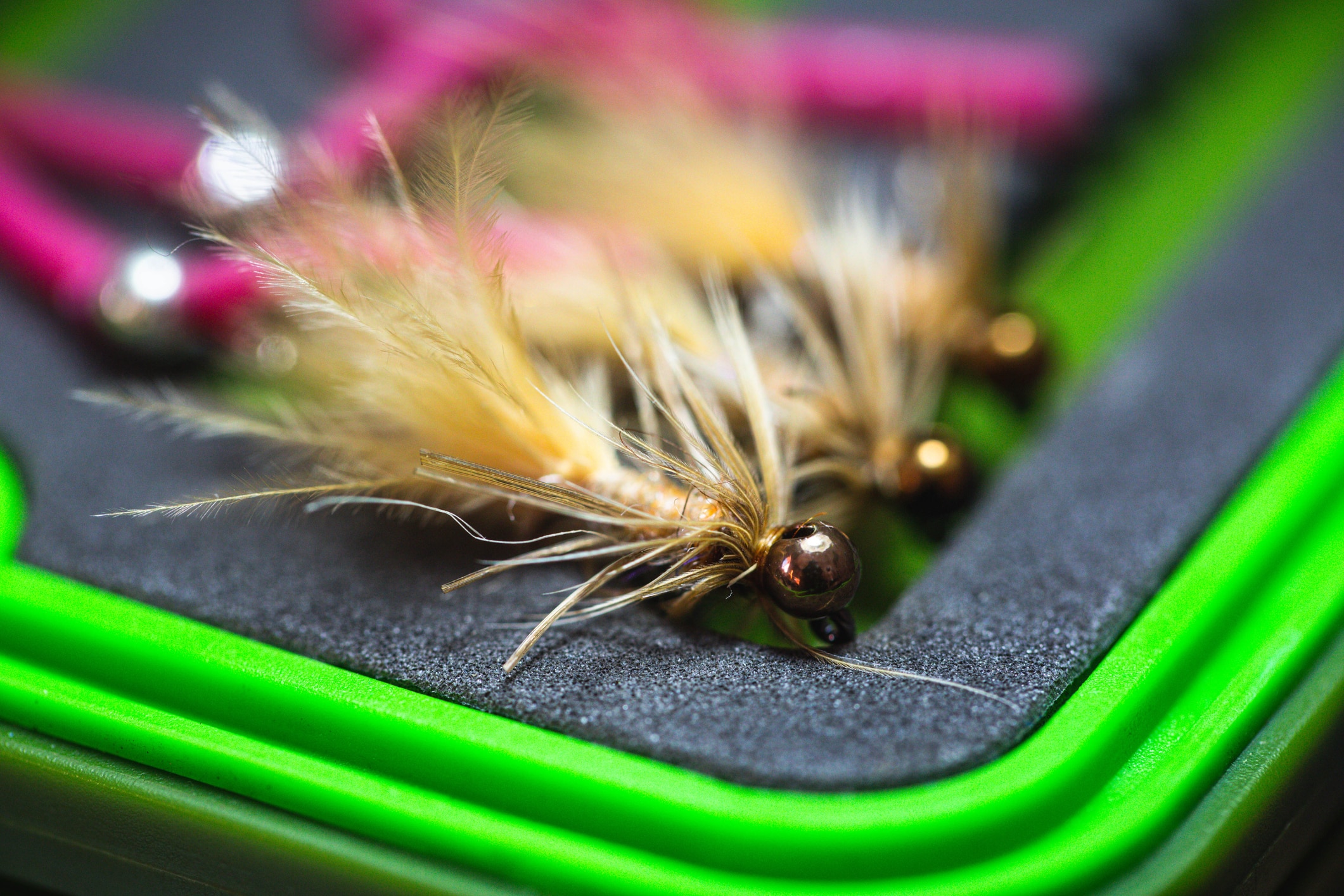Streamer Fishing: An Introduction
Fall is here, meaning big brown and rainbow trout are looking for bigger meals. It’s time to break out your streamers. Built to imitate “baitfish” like minnows and sculpins, but also crayfish and other critters, streamers are flies designed to be fished underwater, using an active retrieve. Streamers can be a solution to challenging conditions, and they are an excellent place for beginning anglers to start. So, let’s get into some basics about streamer fishing.
Why to Use Streamers
Bright lights attract big bugs, and big bait attracts big fish. Many are familiar with the eating habits of Michael Phelps. While amid heavy training in preparation for the Olympics, he would consume upwards of 12,000 calories a day. Big body, big effort, big appetite. The same is true of big trout. The big fellas lurking in deep pools are looking for an appropriately-sized meal. Streamers simulate the kind of meal they’re looking for. The entire goal of using streamers is to tempt big fish to attack. When a big trout sees a sizable snack streak by, he doesn’t have the luxury of caution and pickiness. He needs to feed that big body, so he’s going to gobble that minnow without a second thought.
And if he’s not hungry, he may just be territorial. It’s like the Fourth of July hot dog eating contest. It’s not that the contestants like hot dogs all that much, they just have to eat more of them faster than the guy next to them. Ok, enough food analogies for now…
Streamers can produce spectacularly violent (and thrilling) strikes. It’s almost guaranteed that if you hear a story about a giant brown trout launching himself out of the water during a strike, it’ll be when he was hitting a streamer. As the kids say, streamer strikes “hit different.” Whether he’s feeling hungry, territorial, or if the strike is just pure primal instinct, the biggest trout come out to play when you rig up a streamer.
An advantage of streamer fishing versus dry fly fishing and nymphing for newer anglers is that it emphasizes how the angler is fishing versus what he or she is fishing. Since anglers are imitating fish, not insects, while streamer fishing, the main attention is given to how the movements of your rod and line affect the movements of the fly.

When and Where to Use Streamers
Not to oversell the effectiveness of streamers — there are no guarantees in fly fishing— but streamers are many anglers’ go-to solution for challenging conditions. Throwing streamers in muddy and high water is a common tactic because fish react to shadows when visibility is challenging. If you’re on the river after a rainstorm and the water looks like pea soup, when you open up the fly box to choose a new fly, it might be time to give a streamer a shot.
Another occasion to try a streamer setup is when the water temperature is high, and fish are less likely to be active at the surface. It’s like pizza delivery to a lazy man’s house. He can’t be bothered to get his pants on, get in the car, and drive to the pizza joint to get it himself. No sir! The food needs to be delivered right to his door. Streamers are pizza delivery for trout. Getting that meal down in the water column to the cooler (55-60 degrees F) water where the fish are hanging out is one solution when water temps are rising.
While you always have to read the water and select the right target location, streamer fishing heavily depends on it. When picking your target location to set your streamer, look for deep pockets of water where you can’t see the bottom and visibility is lower (even on clear days). Look for cover like large rocks and banks where fish hide from predators. And you should always look for that magical seam that runs between fast-moving and slow-moving water where fish hang out to conserve energy and snipe at passing snacks.
How to Use a Streamer
“Streamers” is an enormous category with lots of options. You can spend some serious cash on elaborately articulated streamers and specific patterns, but, for this article, we’ll keep the recommendation simple: Stock your fly box first and foremost with an array of wooly buggers. It’s what most people think of when they hear the word “streamer” for a reason. Versatile and affordable, the wooly bugger can imitate an array of minnows and sculpins, as well as leeches and other simple underwater snacks.
While the wooly bugger is traditionally tied with a chenille body and maribou tail, it can be tied with seemingly endless color combos. If you’re wondering when to use what color, the simplest way to remember is darker colors (black or purple) on darker days and lighter (white or gray) on lighter days. The darker patterns will create a silhouette on low visibility days, and the lighter patterns will catch the sun’s reflections on clearer days.
How to Cast a Streamer
Let’s get this out of the way at the start: casting streamers usually isn’t going to be pretty. Some adjustments need to be made when you’re slinging meat. Remember, you’re serving greasy pizza on a paper plate, not minimalist french cuisine, so don’t be self-conscious.
A streamer outweighs the line, so the physics of the cast is different than when casting a dry fly. Usually, it’ll only take a single swing, just to get tension on the streamer before sending it to your target. Look for a spot just upstream of the hole or bank you’re trying to hit so that the streamer has time to sink. You can cast quite a bit further with streamers if you have enough free line to support the distance. So, pick your target, load it up, and let it rip.

How to Fish a Streamer
As mentioned, streamer fishing is about active retrieve, but if you don’t give it a few seconds to get down to the bottom before stripping, you’ll be missing out on the whole advantage! Patience, grasshopper.
Once you’ve given it a few seconds to sink, go ahead and throw a mend so that the current will pull the streamer down the bank, imitating the natural movement of a bait fish.
When you begin stripping line, keep the tip low to the water so the streamer doesn’t rise too quickly on the retrieve. Strip smaller to medium sections of line while adding some personal flair as you get some experience. Remember, you’re imitating a fish, not an insect so pay attention to how the streamer reacts to your movements and experiment. As the streamer approaches the end of its drift through your target water, let it swing back toward you while keeping tension on the line and continuing short strips. For those big fish lurking in that pool, it’ll appear that their pizza delivery guy is whizzing past their door, pizza in hand. They might be motivated to jump up from the couch, open the door, and violently snatch the pizza box out of his hand as he speeds by!







